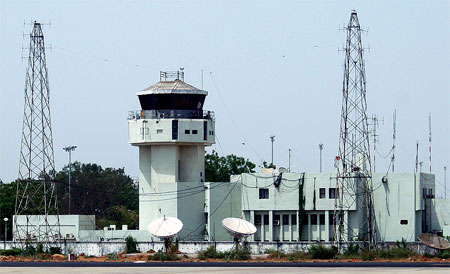INDIAN ARMED FORCES CHIEFS ON OUR RELENTLESS AND FOCUSED PUBLISHING EFFORTS

The insightful articles, inspiring narrations and analytical perspectives presented by the Editorial Team, establish an alluring connect with the reader. My compliments and best wishes to SP Guide Publications.

"Over the past 60 years, the growth of SP Guide Publications has mirrored the rising stature of Indian Navy. Its well-researched and informative magazines on Defence and Aerospace sector have served to shape an educated opinion of our military personnel, policy makers and the public alike. I wish SP's Publication team continued success, fair winds and following seas in all future endeavour!"

Since, its inception in 1964, SP Guide Publications has consistently demonstrated commitment to high-quality journalism in the aerospace and defence sectors, earning a well-deserved reputation as Asia's largest media house in this domain. I wish SP Guide Publications continued success in its pursuit of excellence.
- The layered Air Defence systems that worked superbly, the key element of Operation Sindoor
- Operation Sindoor | Day 2 DGMOs Briefing
- Operation Sindoor: Resolute yet Restrained
- India's Operation Sindoor Sends a Clear Message to Terror and the World – ‘ZERO TOLERANCE’
- Japan and India set forth a defence cooperation consultancy framework, talks on tank and jet engines
In Search of Answers

Aviation infrastructure has not kept pace either with the impressive increase of passenger and cargo traffic or with the remarkable growth of the Indian economy.
Woes besetting the established airlines in India have eclipsed an unpleasant truth. Two years after a new regional airline policy was promulgated, regional aviation is still in the doldrums. When the policy was introduced, it was expected that many companies would be eager to launch regional carriers (see "Promises to Keep", SP’s Aviation 06/09). However, there is just one regional carrier in operation today. Gurgaon-based MDLR Airlines operates to six destinations with a fleet of three aircraft. Several other prospective airlines, after enthusiastically welcoming the policy, have either put their plans on hold indefinitely or abandoned them altogether.
So what does regional aviation lack? In a word, infrastructure.
Airlines Need Airports
In August, Civil Aviation Minister Praful Patel observed that commercial aviation had achieved 20 per cent average annual growth between 2003-2004 and 2008-2009. While the volume of passenger traffic increased from 28.5 million in 2003-2004 to 70.1 million in 2008-2009, the number of airliners grew from 158 to 396 in the same period. The number of domestic departures per week rose from 5,108 to 11,048.
Aviation infrastructure, however, has not kept pace either with the impressive increase of passenger and cargo traffic or with the remarkable growth of the Indian economy. Several major airports are overburdened and offer inefficient services. Airlines have limited landing slots and inadequate parking bays. They experience severe congestion on the ground and in the air, especially during peak hours. In this respect, the pause in the breakneck growth of the last couple of years has proved to be a blessing in disguise by giving infrastructure a chance to catch up, to some extent. Once growth resumes, there is enormous potential to increase aviation penetration. While India is now the world’s ninth biggest aviation market, it still is one of the least penetrated with 0.02 annual trips per person as compared to 0.1 in China and 2.2 in the US. With a middle class over 300 million strong, demand for air services is projected to increase by 8.5 per cent per annum till 2015. Aviation infrastructure obviously needs rapid improvement if it is to keep up. But the development that will help regional airlines is not that of the largest airports of Delhi and Mumbai, but far removed from them.
The government has not been idle. It has launched an ambitious programme to modernise the country’s ailing airports during the Eleventh Plan (2007-2012). Halfway through the plan, work at the metros and mini-metros has either been completed or is well in hand. The Greenfield airports at Bangalore and Hyderabad are now operating smoothly. Incidentally, after the Cochin International Airport, these are the only new civil airports built post-Independence. The Airports Authority of India (AAI) is currently modernising the major airports at Kolkata and Chennai and has similar plans for 35 non-metro airports. However, here is another uncomfortable fact. Just 24 international and customs airports handle around 94 per cent of the air traffic. Consequently, they easily reach saturation. They have little scope to absorb even a minor mishap or bad weather—runway shutdown or major dislocation in service is frequently the result. Congestion also leads to huge wastage of precious fuel.





